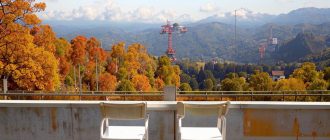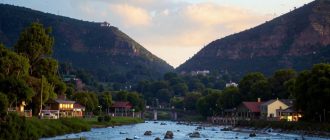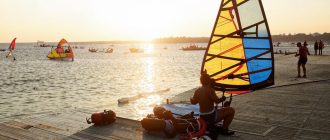Since it is quite difficult to reproduce the specifics of a long trail run in the city, training is often transferred to conditions “as close as possible to combat” – that is, going to the mountains. Such trips – training camps, camps, camps – have long been part of the training plans of serious athletes who aspire to prize-winning places. They also help ordinary amateurs a lot. But let’s talk about everything in order.

ultramarathoner, trailrunner, ERA club founder and coach
Trail starts are often held in the mountains – for many participants the race becomes a serious adventure.
What are trail and running camps?
People running in city parks, along the embankments and streets have become a familiar part of the urban landscape. Meanwhile, the running community is growing and expanding, running “for health”, “to lose weight”, “for company”, and many – “for results”, for competitions. In addition to the growing number of runners, the variety of events is also increasing. There are not only the usual competitions at the stadium and on the highway (mass starts at 10 km, 21.1 km – half marathon and 42.2 km – marathon), there are also 5 km starts in city parks. There are also competitions for running in nature, on minimally modified terrain, without roads with artificial surface – in fact, this is the very trail.
Alexander: Sports discipline implies immersion in an unfamiliar environment and new, previously unexplored difficulties that are not found in the urban routine. And if small distances, which take 1.5-2.5 hours, are quite possible for ordinary city runners with at least asphalt half-marathon experience, then to overcome 40-50 kilometers in the mountains, the requirements for the preparation of athletes are quite different. And this is not to mention the longer distances (and run and 100, and 160, and even 300 km), which are almost impossible to overcome in the conditions of the city.

What is the benefit of running camps?
Training unattainable in the city
A full-fledged camp is 4-6 hours a day of varied physical activity in conditions as close as possible to the upcoming race. Only in the mountains you can perform a continuous ascent of a thousand meters with access to the altitude, where you can feel the lack of oxygen in the air. Only in such conditions you can continuously run down 5-8 kilometers, loading the leg muscles in an inferior mode.
Alexander: Such training, in addition to general endurance, develops the ability of muscles to work in submaximal mode for a long time without losing efficiency. For distances that take place at altitudes of more than two thousand meters above sea level, an important factor is altitude adaptation, i.e. adaptation of the organism to work in conditions of oxygen deficiency.
Where can I go?
The geography is vast – many organizers of training camps tie their events to upcoming starts. Such pre-start training camps complete a long preparation for a big race and help to reach peak form by the beginning of the competition.
Alexander: Our running club ERA holds a camp in Dagestan before the Dagestan Wild Trail race (March 2022), in Prielbrusie before the Elbrus World Race (July-August 2022), in Krasnaya Polyana before the Hoka Wild Trail (August-September 2022), in Crimea before the Crimea XRun (October 2022). In addition, training camps are often organized without a specific start: at the beginning, end or middle of the season. For example, we organize training camps in Dagestan from October 30 to November 7. In this case, there are opportunities to define the goals and objectives of the event without the restrictions imposed by the upcoming race.
In general, camps in the mountains are a powerful tool to prepare for trail starts, which, if used skillfully, significantly increases the chances of success in the upcoming race, allows you to pass the distance confidently, safely, without suffering and with pleasure.






